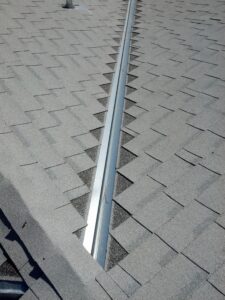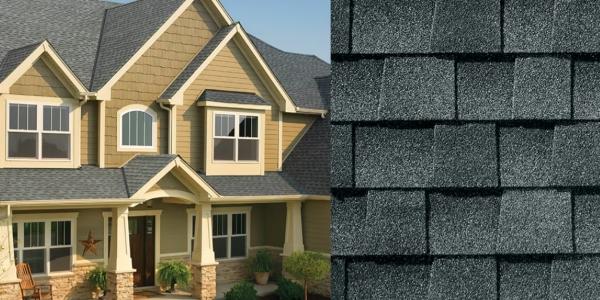Q & A - Is My Roof Valley Installed Incorrectly?

Steve asked, "Why does my valley have two different colors on it?"
WOW, that’s a roof valley you don’t see every day. What you have is an area of the roof called a valley. The shiny straight line is called a W Valley and is most likely 18 inches – 24 inches in width. It is called a W valley because of the small folded ridge in the center of the metal valley that makes a W shape. Incorporating Metal Valleys into a roofing system is fine but these installed shingles are what are in question here.
This is what I would call an open valley. It is a trough left about one and a half inches from the center of the valley metal to allow rainwater to flow freely down and off the roof surface. I hate to use this next term since I live it the state but I call this installation an open California cut valley. Using a bleeder strip to gain a nice straight finish line the installer would use the shingles used for the field but running them at an angle down the valley, gives a great look when the same color is used. Then intersecting the bottom corner of the shingle to the line of the bleeder is the starting or ending point of each course on the valley metal. In this case, the photo sent to me above, the installer used a bleeder but exposed the upper portion of the shingle not too the colored bottom half. This is the outcome I am sorry to say. A different color that looks horrible.
Sorry to see your dilemma, Steve. Obviously it was installed by an untrained roofer. It probably won’t leak but using this installer and making this mistake, gives me concerns about other details in the roof I have not seen. I would advise having a professional licensed roofing contractor do an inspection. I would also call your local building department and find out what is an acceptable valley detail in your local area.
Below are two types of installations I drew on the image above. The left is an open cut. This means each shingle is cut the angle of the valley. Caution, leaving a sharp point at the top will cause water to walk across the top edge of the shingle and off the valley metal. It is advised to dub the shingle as shown. The right side is what you have Steve. This would have worked using the proper color shingle.
Have a question? AskARoofer.
Find your local roofing contractor in the RoofersCoffeeShop® Contractor Directory.









Comments
Leave a Reply
Have an account? Login to leave a comment!
Sign In